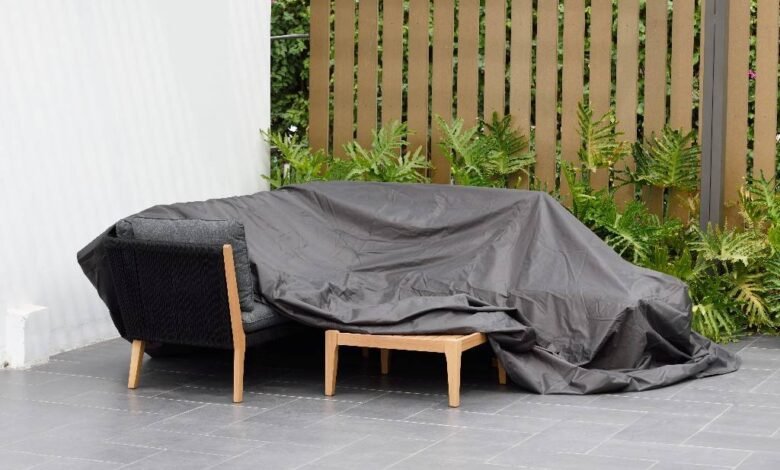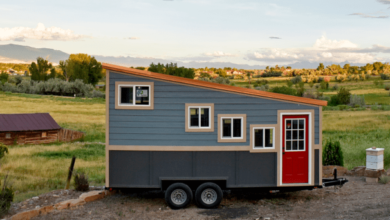
Moving can be a hectic and stressful time, especially when it comes to properly protecting your furniture from potential damage. Whether you’re hiring professional movers or handling the move yourself, using a furniture moving Tarpaulin is crucial for keeping your possessions safe throughout the relocation process.
Furniture Moving Tarpaulin
A furniture moving tarpaulin, commonly called a moving tarp or simply a mover’s tarp, is a heavy-duty protective covering designed specifically for shielding furniture during transportation. Made from durable, water-resistant fabrics, moving tarps create a barrier that shields furniture from scratches, dents, moisture, dust, and debris.
Protection
Furniture can become scratched or dented when bumping and sliding around during transport. Tarps create a protective barrier that cushions furniture and prevents direct contact with hard surfaces that could cause damage. Tables, dressers, and other items are particularly vulnerable to impacts.
Dust Free Storage
Tarps allow furniture pieces to be wrapped securely for long-term storage between moves or to protect seasonal items stored away. They preserve furniture and dust-free environments year-round.
Cleanliness
Moving inevitably means the furniture will be exposed to accumulating dirt, dust mites, pollen, and other debris that get tracked into living spaces. Tarpaulin keeps this contaminant from settling into upholstery fabrics or other porous surfaces that are difficult to clean fully. This helps maintain the clean appearance of furniture post-move.
Moisture barrier
Tarps provide an important barrier against moisture during both transport and storage. Heavy rain, snow, or accidental spills could potentially ruin wood, fabric, or upholstered surfaces without a tarp’s protection. Even high humidity levels pose a risk of warping or mold growth on unprotected items.
UV Shield
Prolonged exposure to the sun’s UV rays during outdoor moving, shipping, or storage can damage wood finishes and fade fabric over time. Some furniture moving tarps contain UV protectants that shield items from these harmful ultraviolet light waves. Read More
Types of moving tarps
There are a few main varieties of moving tarps designed for different furniture protection needs:
Standard Sheets
Basic rectangular tarps in varied sizes from 6’x8′ to 10’x15′ are the most common. Affordable and versatile for multiple uses.
Custom-Fit Tarps
Tarps are tailored with custom dimensions, handles, and reinforced edges to precisely fit odd-sized furniture like sofas, beds, and large appliances for a snug wrap.
Storage Tarps
Extra heavy-duty 18-24 mil tarps with drawstrings are sized for long-term seasonal or whole-room storage. Keep contents clean, dry, and organized for extended periods.
Grommet Tarps
Featuring evenly spaced reinforced grommet holes along the edges, these wrap securely with rope or bungee cords and allow ventilation during storage.
Outdoor Tarps
Made with weather-resistant materials like 300D polyester and PU backing. Ideal for exposed outdoor moves, cover truck trailers, or temporary job site protection.
Lockable Tarps
Include integrated padlocks or hasps to securely seal valuables being moved long-distance or internationally where contents may be unattended for periods.
Furniture Slipsheets
Thin, patchwork-quilt style covers in furniture dimensions are used under items as a base layer or to separate pieces.
Tips for using moving tarps effectively
To get the full protective benefits of moving tarps, it’s important to use them correctly. Here are some best practices:
Inspect for Defects
Unroll the entire tarp and check for holes, tears, or weak spots before loading furniture. Discard damaged tarps.
Fully Deploy the Tarp
Lay the tarp out flat on the floor before placing any items. Ensure the surface is clear of debris.
Staggering Layers
For very delicate items, use multiple thin slip sheets sandwiched between thicker moving tarps rather than a single heavy-duty covering.
Leave Room to Breathe
While tightly sealed, tarps still require air circulation to prevent mold issues. Ensure coverage without balled-up wrinkles that could trap moisture.
Teamwork for Large Items
Have one person on each side of a couch, bed, or heavy item to smoothly roll it onto the center-placed tarp for wrapping.
Tarps Safely Tied Down
For long-term storage uses, tie off any open edges even if interior contents stay protected to prevent accidental tearing while tarped items are left unattended.
Secure with Straps
Use the reinforced tie points or grommets to anchor the tarp corners and edges with straps or packing tape to prevent shifting.
Fold Under Access
Fold excess tarp width under the furniture piece rather than bunching or wrapping over top, ensuring a protective barrier on all sides.
Pad Any Protrusions
Cushion drawers, legs, or other protruding bits that could puncture the tarp with padding like towels or furniture pads underneath.
Seal with Tape as Needed
Apply extra packing tape along joints or seams if various-sized pieces are being wrapped together.
Cover During Transport
Make sure loaded furniture stays fully covered when transported, whether by moving truck, tow trailer, or other vehicle.
Label for Identification
Write descriptions or room assignments directly on tarps to avoid mix-ups at the destination.
Materials used for moving tarps
The most common materials used to manufacture heavy-duty furniture moving tarps are vinyl and polypropylene due to their strength and protective qualities.
Vinyl
Vinyl tarps are abrasion-resistant, durable, and withstand wear and tear well over many uses. They offer decent moisture resistance along with flexibility even in cold temperatures. However, vinyl is not as breathable as other materials.
Polypropylene
A lightweight fabric, polypropylene tarps are water-resistant, breathable, and more flexible than vinyl. They are less prone to cracking compared to other plastics. Polypropylene protects from moisture ingress and resists mildew growth.
Reinforced Edges
Both vinyl and polypropylene tarps feature reinforced edges that are folded over and taped or seamed for extra strength. This reinforcing prevents tears along high-stress areas and provides secure tie-down points.
Tie-Down Straps
Most quality moving tarps include reinforced plastic or metal rings sewn into the edges and corners. Nylon straps are commonly included to secure heavy items tightly to the tarp using these anchor points.
Weight Grade
Tarps vary in thickness, with extra heavy-duty 12-16 mil options able to withstand weights up to 2,000 lbs or more. Lighter residential-grade tarps may only support 500 lbs. Heavier tarps stand up to commercial or long-distance moving needs.
Additional Layers
Some premium tarps contain additional polyester scrim layers for extra puncture resistance without reducing breathability. Others have waterproof PU or PVC coating on the underside.
Read More Articles From: https://blogrism.com/

